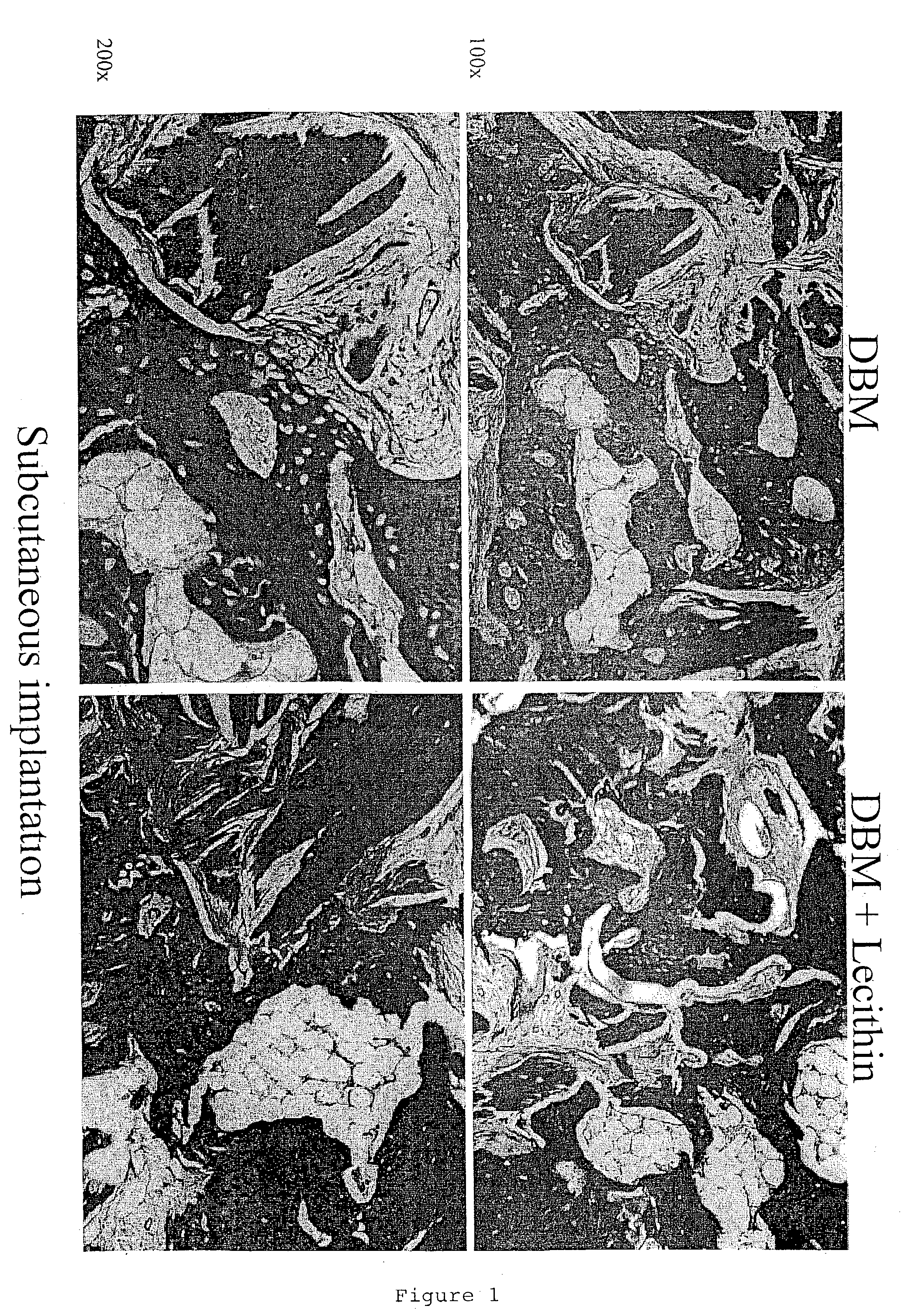Bone graft material incorporating demineralized bone matrix and lipids
a technology of demineralized bone and lipids, applied in the direction of prosthesis, biocide, bandages, etc., can solve the problems of difficult use by surgeons to fill bone defects or regenerate bone, and achieve the effect of modulating the rate of exposure of growth factors in dbm and modulating this behavior
- Summary
- Abstract
- Description
- Claims
- Application Information
AI Technical Summary
Benefits of technology
Problems solved by technology
Method used
Image
Examples
example 1
Lecithin Enhances the Osteoinductivity of DBM
Introduction
[0128] Demineralized bone matrix (DBM), an osteoinductive bone graft material, is widely used for a variety of bone grafting applications. It is used alone or mixed with carriers to form gels, putties and sheets (M. R. Urist, Science 150:893 (1965); E. R. Maddox et al., Tissue Engineer. 6:441-448 (2000). Lecithin is a phospholipid present in cell membranes, and found in significant amounts in the bone calcification front (R. R. Wuthier, Calcif. Tissue Res. 19:197-210 (1975)). The work reported in this Example examined the importance of lipids in the osteoinductive phenomenon. It also assessed the osteoinductive potential of a putty-like grafting material consisting of lecithin and DBM. In order to separate the osteoinductivity from any osteoconductive effects, the test materials were implanted ectopically (subcutaneously and intramuscularly), as well as adjacent to the cranial bone of rats.
Materials and Methods
[0129] Materials...
PUM
 Login to View More
Login to View More Abstract
Description
Claims
Application Information
 Login to View More
Login to View More - R&D
- Intellectual Property
- Life Sciences
- Materials
- Tech Scout
- Unparalleled Data Quality
- Higher Quality Content
- 60% Fewer Hallucinations
Browse by: Latest US Patents, China's latest patents, Technical Efficacy Thesaurus, Application Domain, Technology Topic, Popular Technical Reports.
© 2025 PatSnap. All rights reserved.Legal|Privacy policy|Modern Slavery Act Transparency Statement|Sitemap|About US| Contact US: help@patsnap.com


